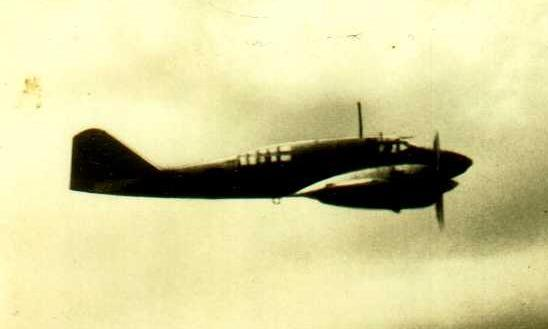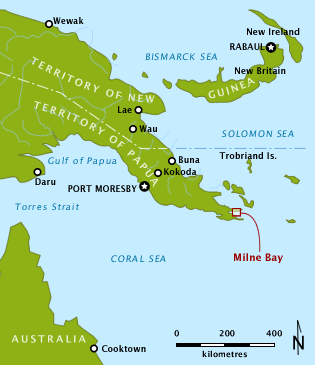
Welcome to the 3rd thread examining the Far Eastern Air Forces report Air Technical Intelligence Group (ATIG) No. 153 Japanese Radar Countermeasures that covered Japanese electronic warfare in WW2. 1/
This was the 1st thread:
This was the 1st thread:
https://twitter.com/TrentTelenko/status/1369805884994428930
The ATIG No. 153 section I'm pulling this summary from is "Actual Operational Use of RCM Equipment By The Japanese Army & Navy - Part B, page 1 of 3"
It is the operational nuts and bolts of how & how often the IJA & IJN used their radio/radar countermeasures kit.
3/
It is the operational nuts and bolts of how & how often the IJA & IJN used their radio/radar countermeasures kit.
3/
1. Nov 1943 IJAAF plane with Taki-5 radar homing receiver (68 to 300 Mhz) used by Fifth Army Air Division in Burma to ferret & destroy Allied radar stations.
The report back from Burma to Japan stated first that the plane was hindered operationally by the monsoon season.
4/
The report back from Burma to Japan stated first that the plane was hindered operationally by the monsoon season.
4/
Second that the plane carrying the Taki-5 and trained crew had crashed in Dec 1943.
Finally, According to US investigators the IJAAF did not put another radar intercept receiver into a plane until August 1945.
5/
Finally, According to US investigators the IJAAF did not put another radar intercept receiver into a plane until August 1945.
5/
2. US investigators also state the IJAAF installed no further
airborne RCM equipment -- other than dipole decoys -- into planes for the rest of the war. The IJAAF officers talked to stated that jamming and anti-jamming efforts in the Home Islands (versus the B-29 campaign?)
6/
airborne RCM equipment -- other than dipole decoys -- into planes for the rest of the war. The IJAAF officers talked to stated that jamming and anti-jamming efforts in the Home Islands (versus the B-29 campaign?)
6/
-- took precedent over all other efforts.
My evaluation: This is not consistent with the units histories of US Army SAW battalions supporting Allied airborne/air landing operations in early 1944. Per Radar magazine the Japanese destroyed the SCR-602 radar at the "Broadway"
7/
My evaluation: This is not consistent with the units histories of US Army SAW battalions supporting Allied airborne/air landing operations in early 1944. Per Radar magazine the Japanese destroyed the SCR-602 radar at the "Broadway"
7/
See these Operations:
Myitkyina
en.wikipedia.org/wiki/Burma_cam…
Operation Thursday (Broadway LZ)
en.wikipedia.org/wiki/Chindits#…
9/
Myitkyina
en.wikipedia.org/wiki/Burma_cam…
Operation Thursday (Broadway LZ)
en.wikipedia.org/wiki/Chindits#…
9/
And these photo clips from Radar Magazine. Please carefully note the 'radio spoof' by the SCR-602 radar station pretending that Allied fighters were coming.
Someone in those IJAAF planes or ground station was an English speaker listening to Allied frequencies.
10/



Someone in those IJAAF planes or ground station was an English speaker listening to Allied frequencies.
10/




At a guess, I think we are looking at another US Joint Chiefs of Staff "Historical Squeegee."
The destruction of the Chindits 'Broadway' radar and the spoof of the Japanese by false fighter director chat implies radio & radar listening plus direction finding.
/11
The destruction of the Chindits 'Broadway' radar and the spoof of the Japanese by false fighter director chat implies radio & radar listening plus direction finding.
/11
2. IJNAF officers talked by US investigators stated that the E-27 shipborne radar intercept receiver was put in large flying boats (Presumably H6K 'Mavis' and H8K 'Emily') in June 1944 with not more than 50 were so fitted by war's end.
12/

12/


My Evaluation:
This statement is highly inconsistent with the total numbers of E-27 built (2,000+), the lack of active IJN surface combatants after Oct 1944, & the FEAF technical analysis of the fit out of the last three models of the Betty bomber with radar listening kit.
13/

This statement is highly inconsistent with the total numbers of E-27 built (2,000+), the lack of active IJN surface combatants after Oct 1944, & the FEAF technical analysis of the fit out of the last three models of the Betty bomber with radar listening kit.
13/


3.Tactically the planes so fitted used them to home on American Submarine radar signals to get a bearing and minimizing their radar signals versus USN submarine radar intercept receivers. Call this "Metrox tactical learning."
14/
(Photo: USS Batfish Memorial. Muskogee, OK)
14/
(Photo: USS Batfish Memorial. Muskogee, OK)

4. Apparently, starting with the Leyte campaign ("Late 1945"), these flying boats were ferreting USN ships and Allied land based radars.
Note: This seems to be _immediately after_ the IJN captured the USS Darter's papers.
15/
Note: This seems to be _immediately after_ the IJN captured the USS Darter's papers.
15/

5. The E-27 was also re-purposed as a night fighter tail warning device on some flying boats late in the war with a tail mounted antenna. US investigators stated it was not used operationally before war's end.
Comment: That was damned smart!
16/
Comment: That was damned smart!
16/

6. The FT-B radar intercept receiver was developed because the E-27's 300-lb weight was considered far too much for Japanese twin and single planes. It was used with ear phones to find the "fade zones" of Allied radars via altitude changes as a standard procedure.
17/
17/

By popping into and out of fade zones and using a line of
sight math formula they computed the range to the Allied radars.
The navigator was in charge of/operated the FT-B and the pilot was fitted so he could also could hear intercepted signals too, likely to aide in
18/
sight math formula they computed the range to the Allied radars.
The navigator was in charge of/operated the FT-B and the pilot was fitted so he could also could hear intercepted signals too, likely to aide in
18/

the fade chart mapping tactic. US investigators stated at there was no consideration given to radar atmospheric propagation with this formula.
Evaluation: This is 1940's SEAD on a stick! While the
Japanese formula didn't take account of signal bending due to surface ducts.
19/
Evaluation: This is 1940's SEAD on a stick! While the
Japanese formula didn't take account of signal bending due to surface ducts.
19/

The IJN navy was -very- familiar with radar surface
ducts, because Japanese waters had a great deal of them. The IJN also had fade charts for the 100 and 200 Mhz signals that were most common with American early warning radars.
20/

ducts, because Japanese waters had a great deal of them. The IJN also had fade charts for the 100 and 200 Mhz signals that were most common with American early warning radars.
20/


It also means the whole idea that there were Japanese radar & RCM pathfinder's escorting kamikaze's through USN radar fade zones has a documented tactical basis in reality.
21/


21/



7. The FT-B radar intercept receiver was unsatisfactory because it did not read intercepted radar signals directly on it's visual O-scope, but rather their harmonics. This made it hard to operate and unpopular with the crews.
22/
22/
My Comment: What was the IJN thinking here?
It had to be darned difficult to train crews to determine signals that way. My speculative guess here is that the IJN was all into auditory rather than visual presentations and wanted something good enough right then.
23/
It had to be darned difficult to train crews to determine signals that way. My speculative guess here is that the IJN was all into auditory rather than visual presentations and wanted something good enough right then.
23/
8. Six FT-B were on the 18 Betty 22's carrying Oka's that attacked the US carrier fleet in March 1944. It appears that the FT-B caught a disproportionate share of the blame.
Comment: Holy spit! There were two radar pathfinder
Betty's that were supposed to go with the that
24/
Comment: Holy spit! There were two radar pathfinder
Betty's that were supposed to go with the that
24/

missed it due to maintenance issues. If they were the only
fully capable FT-B crews. It means that their absence prevented the whole group from even attempting the "Fade Zone Games" that looks like was standard procedure. The FT-B was blamed for the lame tactics the IJN
25/
fully capable FT-B crews. It means that their absence prevented the whole group from even attempting the "Fade Zone Games" that looks like was standard procedure. The FT-B was blamed for the lame tactics the IJN
25/
...flag officers insisted upon. (flying in one formation straight and level) The USS Bunker Hill was -Very Lucky- the IJN high command committed the Betty-OKHA group before it was ready.
26/
26/

@threadreaderapp unroll
• • •
Missing some Tweet in this thread? You can try to
force a refresh













